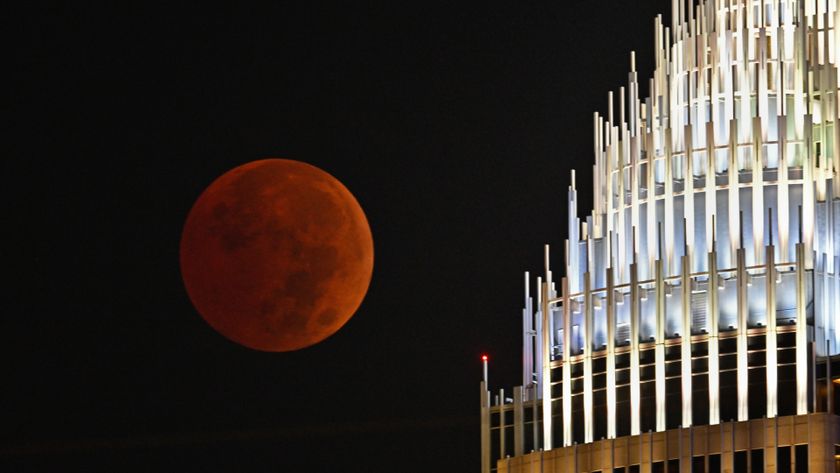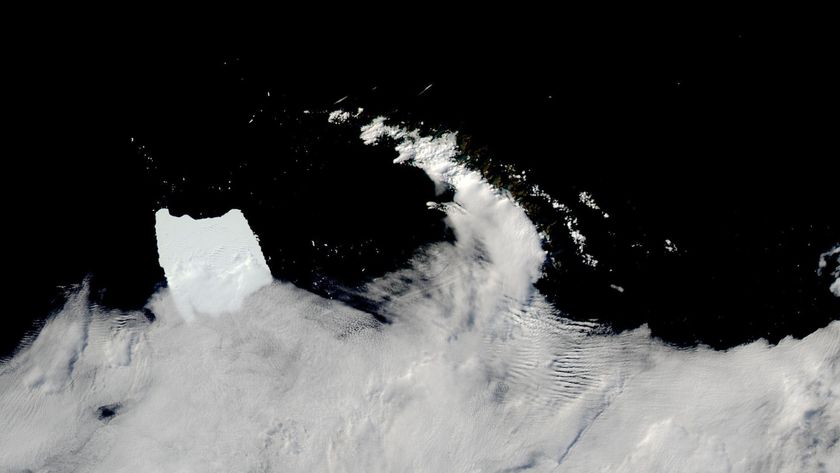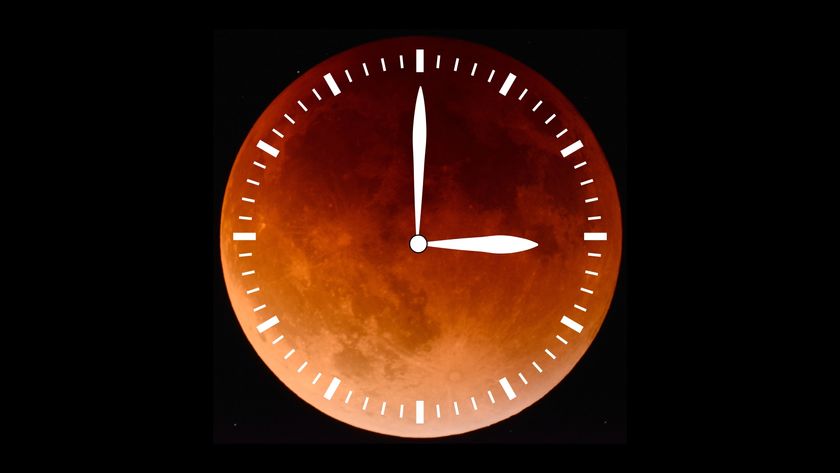Transit of Venus FAQ: Everything You Need to Know
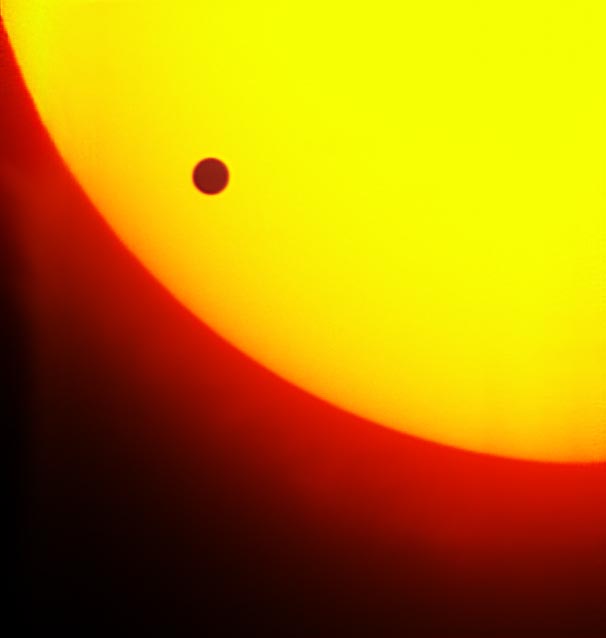
On June 5, skywatchers around the world will be treated to a rare astronomical event when Venus dances across the solar disk for the last time this century.
The so-called transit of Venus is a much-anticipated event that has attracted wide interest around the globe. To prepare for the historic spectacle, here are some frequently asked questions (and answers) on the rare celestial sight:
What is the transit of Venus?
When Venus crosses in front of the sun, astronomers refer to this as a "transit." As the planet moves along its orbital path, it will travel across the solar disk, making it appear to observers on Earth as a small black blemish on the face of the sun.
What's so special about it?
Due to the tilt of the planet's orbit, transits of Venus are some of the rarest astronomical sights because they only occur in pairs eight years apart, once every 100 years or so. The last Venus transit occurred on June 8, 2004, and the next one will not be visible again until the year 2117, more than 100 years from now. [Transits of Venus Through History (Gallery)]
Prior to 2004, the last pair of Venus transits took place in 1881 and 1889.
Get the Space.com Newsletter
Breaking space news, the latest updates on rocket launches, skywatching events and more!
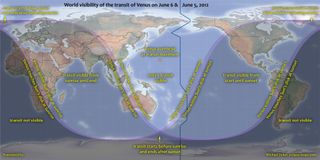
How can I watch the transit?
As Venus passes in front of the sun, the planet will cover only a small fraction of the solar disk, which means observers need to protect their eyes. It is very dangerous for humans to stare at the sun (even mid-transit) without proper eclipse glasses or solar filters for binoculars and telescopes.
To observe the sun, dense filters are used to block damaging rays. The only safe filters are #14 welder's glass, which is sold in specialized welder's supply stores. Special eclipse glasses are also available from telescope stores and astronomy clubs (they should only cost a couple of dollars).
Another way to watch the transit is using a "pinhole camera," which can be made from a large cardboard box. [Video: How to Make a Pinhole Camera]
If you plan to watch the transit with binoculars or a small telescope, you will need a proper full-aperture solar filter.
When and where can I see the 2012 transit of Venus?
Venus will cross the face of the sun on June 5, 2012, and will be visible from many parts of the world. Since the event takes place across the International Date Line, the transit will occur on Wednesday, June 6 in Asia, Australia, Africa and Europe.
Skywatchers in North America, Europe, Asia and eastern Africa will be well-placed to see at least part of the transit in person.
To see if there are any local events in your hometown to view the transit of Venus, NASA has put together a map showing the location of various viewing parties around the world on its Sun-Earth Day website: http://venustransit.nasa.gov/2012/transit/event_locations.php
If, however, you are unable to witness the event in person, several organizations will be broadcasting footage from observatories and telescopes online.
For example, NASA will be hosting a webcast on June 5 that will last the entire length of the Venus transit. Viewers who tune in will be able to see the entire event unfold, through footage streamed live from t he summit of Mauna Kea, Hawaii. These views will be accompanied by commentary from astronomers and transit experts. The webcast is currently scheduled to begin at 5:45 p.m. EDT (2145 GMT).
For more information, SPACE.com has put together a handy guide for how to watch the transit of Venus online: http://www.space.com/15956-venus-transit-online-skywatching-webcasts.html
What time will I be able to see the transit of Venus?
The transit will begin at around 6:09 p.m. EDT (2209 GMT) on June 5, and will last roughly seven hours. People located in the mid-Pacific region, where the sun will be high overhead throughout the transit, are particularly lucky because they will be able to witness majority of the event.
Still, others in North America, Europe, Asia and eastern Africa should be able to see at least part of the transit in person.
In North America, the best time to view the transit will be in the afternoon, in the hours before sunset on June 5. In Europe, Africa and Australia, Venus will be traveling across the sun as it rises in the morning on June 6.
Skywatchers throughout most of Asia and across the Pacific Ocean should be able to view the event any time on Wednesday. Still, it's important to keep in mind that these guidelines are all contingent on local weather and conditions.
For more information on viewing times, check out this article: http://www.space.com/15910-venus-transit-2012-observing-tips.html
Can the transit of Venus be seen from space?
Yes. In fact, NASA astronaut Don Pettit, who is currently aboard the International Space Station, is planning to be the first to photograph the Venus transit from space. Pettit is planning to snap pictures of the celestial event from the station's seven-windowed Cupola observation room.
NASA's Solar Dynamics Observatory is also planning to watch the transit from space. According to agency officials, the satellite will use observations from the event to calibrate its instruments and glean information about Venus' intensely hot atmosphere.
What are the different stages of the transit?
Astronomers refer to different phases of the transit of Venus based on "contacts." When the planet first touches the outer edge of the sun, this is known as first contact. Second contact occurs when Venus appears to be completely on the sun. Third contact refers to when Venus touches the sun's inner edge, and fourth contact follows when the planet is totally separate from the sun.
This website can be used to calculate local transit times, including the various stages of contact: http://transitofvenus.nl/wp/where-when/local-transit-times/
Follow SPACE.com for the latest in space science and exploration news on Twitter @Spacedotcom and on Facebook.
Join our Space Forums to keep talking space on the latest missions, night sky and more! And if you have a news tip, correction or comment, let us know at: community@space.com.

Space.com is the premier source of space exploration, innovation and astronomy news, chronicling (and celebrating) humanity's ongoing expansion across the final frontier. Originally founded in 1999, Space.com is, and always has been, the passion of writers and editors who are space fans and also trained journalists. Our current news team consists of Editor-in-Chief Tariq Malik; Editor Hanneke Weitering, Senior Space Writer Mike Wall; Senior Writer Meghan Bartels; Senior Writer Chelsea Gohd, Senior Writer Tereza Pultarova and Staff Writer Alexander Cox, focusing on e-commerce. Senior Producer Steve Spaleta oversees our space videos, with Diana Whitcroft as our Social Media Editor.

